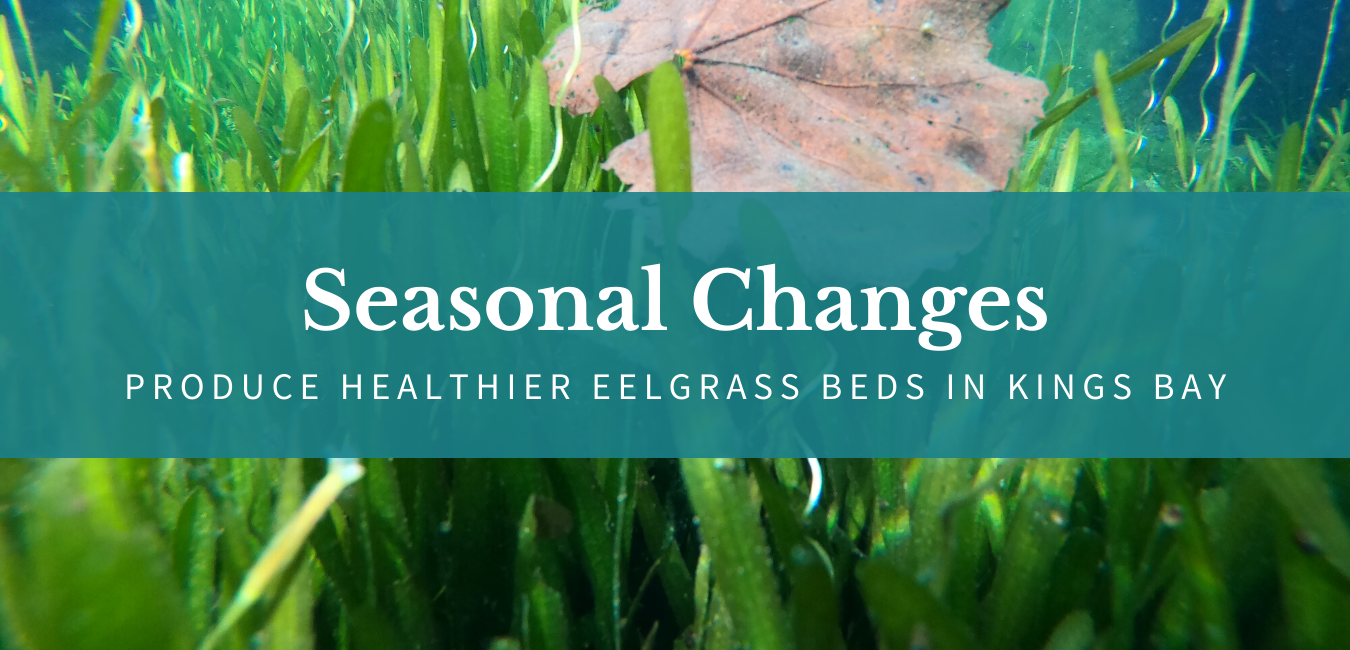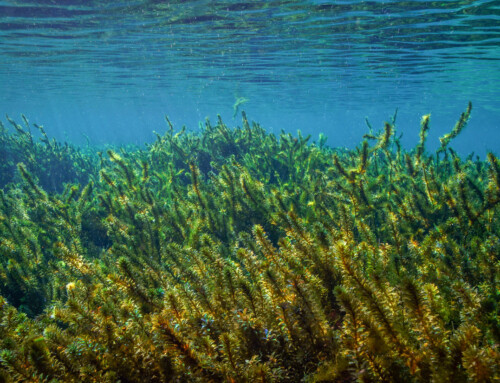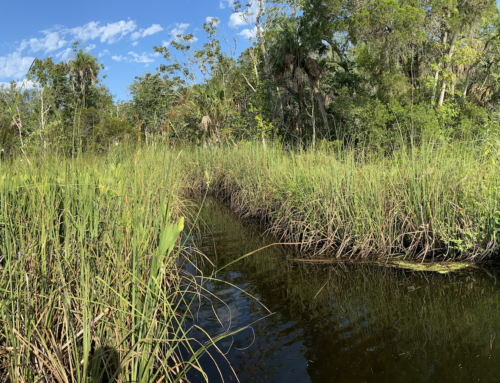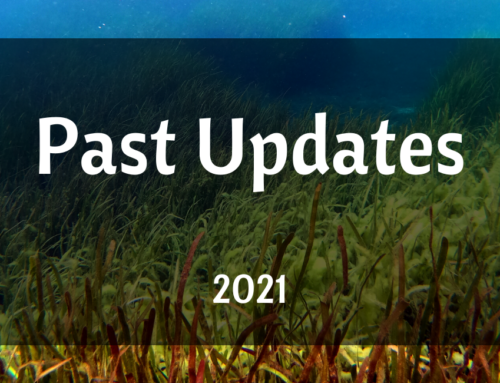If you have swam, boated, or paddled around Kings Bay this winter, you have probably seen an unusual amount of eelgrass blades floating throughout the canals.
A closer look may have even revealed that some of the robust eelgrass beds you have grown accustomed to seeing might be looking a little thinner than usual. No need for concern. This is completely normal for this time of year! Just like any other submerged or terrestrial plant, it is common for eelgrass to display seasonal variation in biomass (volume). In other words, just like an oak tree loses its leaves in the fall, or the grass in your yard goes dormant during the winter, eelgrass has its own unique seasonal growth cycle.
Like most seagrasses in Florida, eelgrass displays peak above ground biomass from late spring until early fall. During this “growing season” each eelgrass shoot may have up to 15 leaves that can grow to nearly four feet in height. This results in beautiful, dense eelgrass meadows that have spread all throughout the northern portion of Kings Bay. During the winter months, however, the combination of cooler temperatures, shorter days, an increased number of herbivores, and a unique physiological response often result in leaf loss, slower growth rates, and a cause of concern for those who witness the change.
To understand the reason for this change, it is important to understand the ideal conditions for eelgrass growth.
Eelgrass growth is affected mostly by water temperature and light availability. Optimal growth occurs when water temperatures range from 77°F to 95°F. While it is true that spring water does release at a constant 72°F year-round, did you know that the average water temperature in Kings Bay can change quite a bit throughout the year? According to the U.S. Geological Survey (USGS) 02310742 station located in Kings Bay, Crystal River, water temperature ranged from 76°F to 87°F during the months of June to September this past year. During the month of December 2019, however, water temperature ranged from a high of 74°F and dipped down to a low of 64°F according to the same station. These values fall below the optimal temperature for eelgrass growth.
When it comes to light availability, laboratory studies have suggested that optimal eelgrass growth may occur when plants are exposed to a 20:4-hour ratio of sunlight to darkness. In other words, the more sunlight there is, the more growth will occur. While it may not seem like there is much of a change, did you know that the City of Crystal River received over three and a half more hours of sunlight on July 1st than it did on December 1st? In fact, the month of July averages 13 hours and 47 minutes of sunlight in Crystal River, whereas the month of December averages only 10 hours and 22 minutes. That’s nearly 25% longer days during the summer!
So, while the decrease in water temperature and sunlight availability may explain the lack of growth, what then accounts for the loss of existing leaves? This is actually a very normal response that is observed in nearly all seagrasses throughout Florida. In fact, most seagrass surveys that are done to identify or quantify an existing seagrass habitat are only accepted between the months of June and September. The reason for this is because seagrass displays such a drastic change in above ground biomass, that a survey done during the winter does not accurately account for the actual density or coverage of a seagrass meadow. Eelgrass, specifically, often displays up to 15 leaves per shoot during the growing season, and as few as three to five leaves per shoot during the winter months.
Another huge factor when it comes to wintertime leaf loss is the seasonal influx of manatees into Kings Bay. Manatees, which can eat up to a tenth of their body weight in seagrass per day, use Kings Bay as a thermal refuge when temperatures in the Gulf of Mexico become too cold. As a manatee grazes around a seagrass meadow, it is completely normal to see leaves float to the surface.
So, what can we expect?
Does eelgrass just shut off when the temperature gets too cold, the days get shorter, and manatees come to eat the blades? Well, from the surface it may appear that way, however, the winter is a crucial time in the survival, growth, and expansion of eelgrass. When above ground biomass, such as leaf formation, goes dormant, eelgrass shifts its focus into growing specific belowground structures called winter buds. Winter buds are formed at the end of summer and grow belowground throughout the duration of winter. They typically cannot be seen during the winter months unless you dig around the sediment a bit. These winter buds elongate throughout the winter and sprout as new shoots in the spring. Each of these winter buds is capable of then growing up to 20 new shoots over the next growing season! So, stay patient. Every winter we see the same seasonal changes in eelgrass density, and every spring it comes right back larger, healthier, and denser than we have seen before.
Guest Article
Written By:
Ryan Brushwood
Sea & Shoreline







